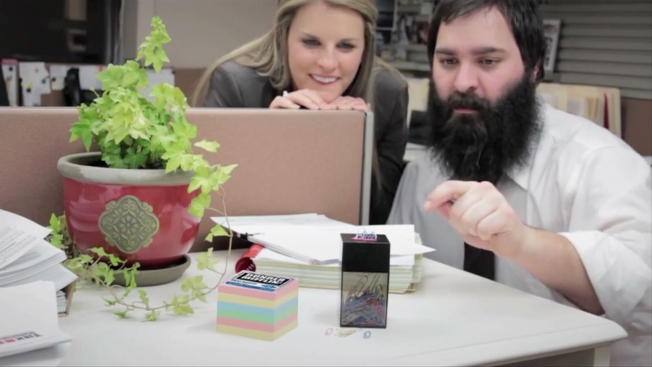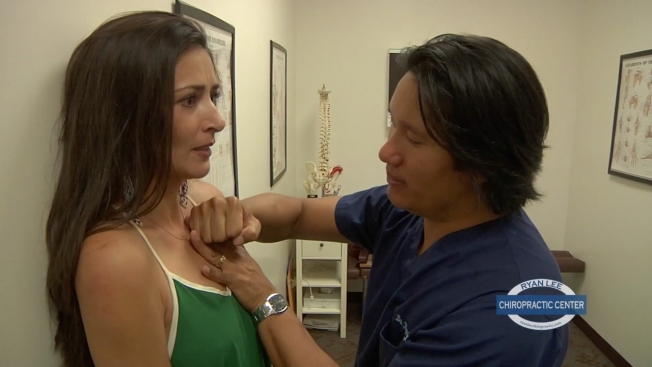Whence the path of reverence and wonder?
From Adbusters #107: The Epic Story of Humanity: Part 1, Spring

Ruth Skinner
I recently undertook an experiment. It involved enrolling in a university course — in this case an economics/business degree at the bachelor level — in order to see what it may be possible to learn.
For several hundred dollars I purchased the “required reading” textbooks for four units, read the necessary chapters for the first week and eventually made my way to classes.
The first lecture I attended was “Introduction to Sustainability,” followed by its associated tutorial. In laying the groundwork for the unit, the supervisor — obviously a kind-hearted and compassionate man (he got teary at one point while describing conditions in the developing world; conditions he’d obviously seen first hand) — asked students to write down and share their hopes in relation to the unit. He then asked what people’s greatest fears were in connection to the unit. Almost half the class said they were afraid of failing.
The following day I attended an “Introduction to Economics” lecture. There were about 200 people in the theater. At one point the lecturer asked how many people also worked while studying; around three quarters of the students raised their hands. She commented that this was a big change from her time as a student; I would say the same. She went on to discuss what she called “three key economic ideas.” The first is that people are “rational” (economists expect people to make decisions based on relevant information in order to “achieve their goals”). The second is that “people respond to economic incentives.” To prove this point, she asked how many people were there for the pure fun — for the pure joy — of it? Of around 200 people, not one person put up their hand. She, thereby proving her point, concluded that we were all there because of some incentive or other, predominantly that we may end up with a better job.
At my economics tutorial we flew rapidly through everything we were required to do in order to pass. No one spoke, other than the tutor, and everything she said was advice of some kind as to how we could ensure we pass. “Only about 4 percent of people receive HD’s (High Distinctions),” she said. “It is a bit easier to get a Distinction. But still, aim for an HD.” In warning us of the dangers of plagiarism and the need for appropriate referencing, she had the following to say: “Very rarely will you ever have a new idea. I have none.” We should, therefore, look solely to the thoughts of others and, consequently, reference everything. “There is a thing called ‘common knowledge,’ but…”
Two days later I attended a lecture on “Principles of Finance and Banking.” The lecture matched the required reading, urging all students to save as much money as possible now so that they have enough to live on when they retire. The lecturer stressed the concepts of “financial independence and self-reliance,” and of “survival” in the “corporate jungle.” It doesn’t look as if the class will be exploring the recent/ongoing Global Financial Crisis and what kind of paradigm and thinking actually underpin it.
It is at this point that I am reminded of a distinction made during the lecture on economics. It was concerned with the difference between positive and normative analysis. Normative analysis is more about value judgments — “shoulds” and “oughts.” Economists, it was said, use positive analysis — that is, they stick to the facts, saying not that something “should” or “ought” to be done, only “if you do this, then this will happen”; or so they should or ought to. Nothing was said of when they don’t, or of this concept itself being normative in essence, or the possibility of the two types of analysis overlapping.
You might wonder what drove me to such an experiment. I suppose that I wanted to see what current tertiary education has to say about the global economic situation we find ourselves in, and whether the thoughts necessary in order to renew social conditions were going to emerge from institutions such as this.
In general, this kind of education can be experienced as a “stuffing of one’s suitcase” with knowledge. If you don’t fill your suitcase up with content during the readings, you will fill it up during the lecture. If you are still not full, you can supplement from the lecture notes and the online lecture and/or website “lab.” If this doesn’t do it, there are always tutorials, study groups, help classes and online forums, not to mention the actual assignments. Failing all this, there is the cramming for tests and, ultimately, the exam. All during this time, the bulk of knowledge and information is stuffed — crammed — into our suitcases until we have doubled up on items, packed things we will never need, jammed in clothing for the wrong climate altogether and shoved in more things wherever there is room just to get it in there — just in case. We then sit on it and try our hardest to zip it up, our clothes getting stuck in the teeth of the zip as we pull it around, until finally we are able to more or less close it — it is good enough — some clothes still hang out where the zips meet, and extra books stick out of the front pocket all bent and warped, but it’ll do — we’re ready to travel. Or so we are told.
During this process, however, little to no questioning is made as to where it is we are actually headed, why we are headed there, if this is the place we really want to be going, or what alternatives there might be.
These suitcases are, essentially, nothing but our own heads. We are doing nothing other than stuffing our own heads. And, if we are honest, little to nothing of it sinks any lower than this; little of it reaches as far as our feeling life or our will. And so when we ultimately throw the case on the conveyor belt of life — following exams — the whole thing usually explodes, scattering its contents everywhere. We soon realize, however, that such contents are largely irrelevant and unnecessary (often, strangely, by virtue of the fact that we fail to notice their absence), and are quickly forgotten. For all we now require is the degree such activity bought us — the “boarding pass” now in our hand — education distilled into a commodity.
This, we might feel, is all we need. That is, until our debt repayments kick in. And if Spain and elsewhere are anything to go by, we may also find ourselves amidst the lack of possibilities for earning the money necessary to pay off that which we undertook simply in order to earn more money. In such places — and as such places become more of a global space — we find ourselves in a worse position than when we started. Our “economic incentive” has turned back upon us and, as the debts pile up, begins to actually devour us. We are no longer the consumer. We become, as it were, consumed by our own “incentives.”
I do not believe I am alone when I say that I am no longer interested in “passing” or “failing” in the sense outlined above. I also do not believe I am alone when I say I am interested in education for the “joy” of it. I believe everything can be studied with such a joy as this. This is the path of reverence and wonder. I am convinced that I am not alone when it comes to respecting the need for new ideas if the world is not to slide completely into the abyss, as well as for the importance of developing one’s self in order that such ideas may arise. Here — where the essential aspect of the individual overlaps with the essential aspect of all phenomena (including social phenomena) — this is the place where the objective and the subjective overlap, where duality dissolves, and we can come to know the objective, essential reality of the world as a new thought, and on the stage of our selves — as a self-referential truth.
What is needed is an “unpacking of the suitcase.” Space must be made for what each individual human being bears within them as a world-contribution, and for everything which can stream through a thinking, feeling and willing being who has put themselves in the service of the highest possibilities of this world — all that which stands against the complete demise of civilisation itself.
The suitcase must be left permanently unzipped; it must remain permanently open to the highest possibilities of other human beings and the world at large.
A “Higher Self Education” is needed; meaning both an education towards the development of our highest possibilities as human beings, as well as a free-self-directed educational, and more broadly, cultural life, which can arise through (and give rise to) the development of these capacities.
Ultimately, what is needed, more than any theory or program, is that individuals — as students and as educators (for we are each both of these in our age) — be prepared to put themselves in service of the true spirit of our time. This will not happen by endlessly referring to the past, but only if we make a space for the future to emerge through us.
John Stubley has a Ph.D. in English and Comparative Literature. He is the founder of the Centre for Social Poetry, and co-founder of RePerth, Occupy the Future and MacroScope Solutions.



























